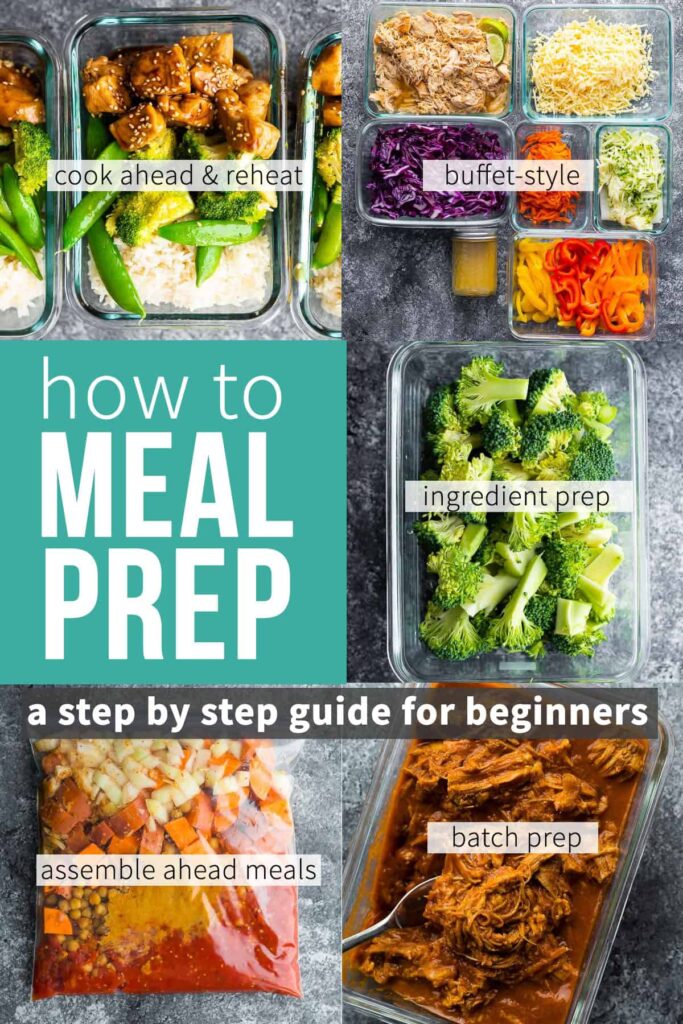Mastering meal planning can improve healthy living, save valuable time and reduce grocery costs. For busy individuals struggling with healthy eating, a step-by-step guide is offered to simplify meal plans. To begin, creating a weekly meal plan is crucial to mastering meal planning, utilizing tools such as meal planning apps or printable templates. Followed by creating an ingredient list that involves checking what’s already available in your pantry or fridge to avoid unnecessary purchases. Grocery trips could be made easier by using a grocery delivery service or curbside pickup, while meal prepping on weekends or weekdays can prove useful for busy individuals. By following these tips and keeping a simple, realistic, and creative approach, meal planning can become a stress-free part of a healthy lifestyle.
Mastering Meal Planning: A Step-by-Step Guide for Busy People
Meal planning is an important aspect of keeping a healthy lifestyle, and it can also save time and money. However, meal planning can be challenging, especially for busy people who have hectic schedules. If you are one of these people, don’t worry. This step-by-step guide will help you master the art of meal planning.
Step 1: Plan Your Meals for the Week
Planning your meals in advance is essential to mastering meal planning. Start by choosing the meals you want to eat for the week. To make the process easier, consider using a meal planning app, like Mealime or MealBoard, that offers recipe ideas and generates grocery lists based on what you plan to cook. Alternatively, you can use a printable meal planning template to keep track of your meals.
Step 2: Create a Grocery List
Once you have your meals planned out, create a grocery list. This list should include all the ingredients you will need to make your meals. Be sure to check your pantry and fridge for ingredients you already have on hand, as this can help you save money at the grocery store.
Step 3: Shop for Groceries
Now that you have your grocery list ready, it’s time to go shopping. Shopping for groceries can be time-consuming, but there are ways to make it easier. Consider using a grocery delivery service, like Instacart, or opt for curbside pickup at your local grocery store. These services can help you save time and avoid the crowds.
Step 4: Prep Your Meals
After you have your groceries, it’s time to prep your meals. This step is crucial for busy people as it saves time during the week. Most meal prep can be done on the weekends, but it can also be done during the week if you have time. During meal prep, consider cooking your proteins, chopping your veggies, and prepping your grains. You can also portion out your meals and store them in containers for easy grab-and-go meals during the week.
Step 5: Cook Your Meals
When it’s time to cook your meals, be sure to follow your meal plan and recipes closely. Having your meals planned in advance will make cooking a breeze, and it will help you avoid the temptation of ordering takeout. If you have a busy schedule, consider cooking larger portions so that you can freeze leftovers for another week.
Tips for Mastering Meal Planning
1. Keep it Simple: When planning your meals, keep things simple. Stick to familiar recipes and ingredients that you know you like. This will help you avoid the temptation of ordering takeout.
2. Prep Meals in Advance: Meal prep is key to saving time during the week. Consider prepping your meals on the weekends or during the week when you have time. It will make cooking during the week much easier.
3. Set Realistic Goals: When starting meal planning, it’s important to set realistic goals. Don’t try to plan every meal for the week if you don’t have time. Start by planning a few meals and work your way up from there.
4. Mix it Up: Eating the same thing every day can get boring, so be sure to mix up your meals. Try new recipes and ingredients to keep things interesting.
5. Use Leftovers: Leftovers are a great way to save time and money. Consider cooking larger portions so that you have enough for leftovers during the week.
Conclusion
Meal planning is an essential aspect of healthy living, and it can be done even if you have a busy schedule. By following the steps in this guide and using the tips provided, you can master meal planning and save time and money while eating delicious, healthy meals. Remember to keep it simple, prep meals in advance, set realistic goals, mix it up, and use leftovers. With these tips, you will become a meal planning pro in no time.
